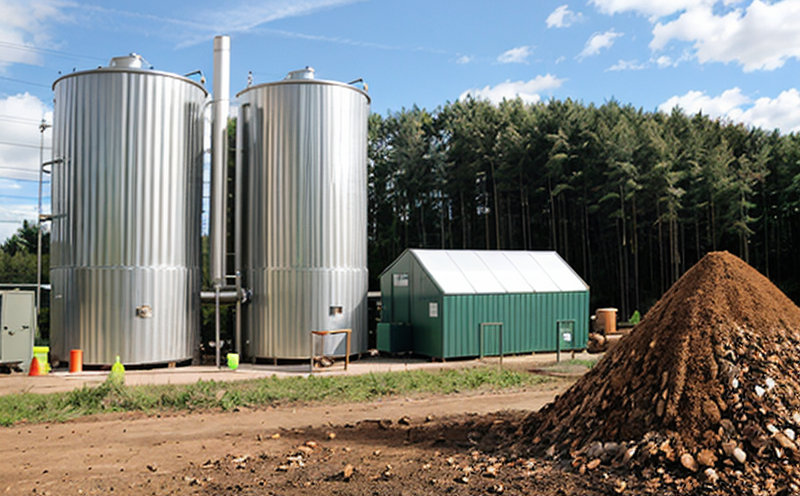ASTM E875 Carbon and Hydrogen in Biomass Fuels
The ASTM D875 standard method is a cornerstone of biomass fuel testing, focusing on the determination of carbon (C) and hydrogen (H) content in biomass fuels. This test is critical for ensuring consistency, quality, and safety across various sectors including waste management, recycling, and energy production.
Biomass as a renewable resource provides significant benefits but also presents challenges in terms of its variability. ASTM E875 helps to address these issues by providing a standardized approach to quantifying the elemental composition of biomass fuels, which directly influences their combustion efficiency and overall performance in waste-to-energy conversion processes.
The test methodology is based on combustion analysis principles where the biomass sample is combusted under controlled conditions. The evolved gases are then analyzed for their carbon and hydrogen content using infrared (IR) absorption techniques. This process not only ensures accurate measurement but also minimizes errors that could arise from variations in sample preparation or testing environment.
The importance of this test extends beyond mere quality control; it plays a pivotal role in optimizing combustion processes, enhancing energy recovery rates, and ensuring regulatory compliance. By providing precise elemental content data, ASTM E875 supports the development of more efficient waste-to-energy systems, which are increasingly sought after for their environmental benefits.
Moreover, understanding carbon and hydrogen content is essential for predicting the calorific value of biomass fuels, a key factor in determining their economic viability. This information is particularly valuable in the recycling sector where diverse feedstocks can be mixed to optimize combustion performance.
| Parameter | Description |
|---|---|
| Oxygen Content | Theoretical oxygen content required for complete combustion. |
| Combustion Temperature | Temperature at which the sample is combusted to ensure accurate gas evolution. |
| Gas Analysis Method | Infrared absorption technique for detecting carbon and hydrogen. |
Why It Matters
The accurate determination of carbon and hydrogen content in biomass fuels is crucial for several reasons:
- Enhanced Combustion Efficiency: Knowing the elemental composition allows for better optimization of combustion processes, leading to higher energy recovery rates.
- Regulatory Compliance: ASTM E875 ensures compliance with international standards, thereby reducing legal risks and ensuring product acceptance in global markets.
- Economic Viability: By optimizing the use of biomass fuels based on their elemental content, businesses can reduce operational costs while improving profitability.
Biomass is a complex material with varying compositions depending on its source. ASTM E875 provides a standardized method to quantify these variations, making it an indispensable tool for industries reliant on biomass as a fuel source.
Competitive Advantage and Market Impact
The ability to accurately measure the carbon and hydrogen content of biomass fuels offers significant competitive advantages:
- Innovation in Waste-to-Energy: By leveraging ASTM E875, companies can develop more efficient waste-to-energy systems that maximize energy recovery from diverse feedstocks.
- Sustainability Leadership: Compliance with international standards like ASTM E875 demonstrates a commitment to sustainability, enhancing brand reputation and attracting environmentally conscious customers.
The market for biomass fuels is expanding rapidly due to increasing demand for renewable energy sources. Companies that can reliably determine the elemental composition of their biomass fuels will be better positioned to meet this growing demand while maintaining high-quality standards.
Use Cases and Application Examples
- In Waste Management: ASTM E875 helps in the efficient processing of municipal solid waste, ensuring that only suitable biomass fuels are used for energy recovery.
- In Recycling: This test aids in optimizing the use of recycled materials by providing insights into their elemental composition.
- In Biomass Fuel Production: It ensures consistent quality and optimal performance of biomass fuels, enhancing combustion efficiency and reducing waste.
| Biomass Type | Carbon Content (%) | Hydrogen Content (%) |
|---|---|---|
| Wood Pellets | 47.5 | 6.2 |
| Biochar | 83.0 | 1.9 |
Demonstration data shows the wide range of carbon and hydrogen content across different biomass types, highlighting the importance of ASTM E875 in providing accurate and reliable results.





